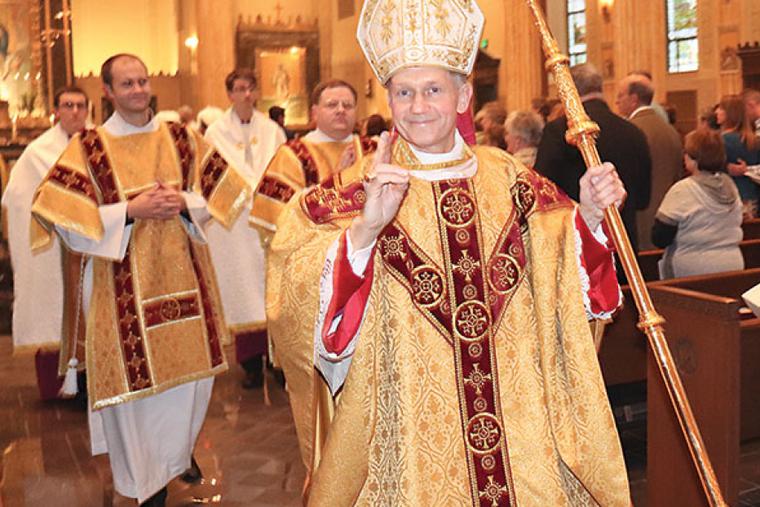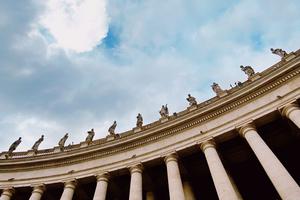The Synod on Synodality: What Every Catholic Should Know
With listening sessions occuring throughout the country, U.S. dioceses and eparchies that have embraced the synodal process hope to see a revival of engagement with their flock after pandemic-era restrictions.

Editor's Note: This story has been updated.
Pope Francis’ Synod of Bishops focuses on the meaning and purpose of synodality itself. Launched in October 2021, it was designed to draw local Catholics and national bishops’ conferences, religious orders and curial officials into an extended period of consultation and discernment that will culminate with an October 2023 assembly in Rome, along with a second session planned for October 2024.
“The fullness of the synodal process can only truly exist if the local churches are involved [in] that process,” stated a communiqué, approved by Pope Francis and issued by the General Secretariat of the Synod of Bishops, that outlined the new synodal itinerary underpinning the topic: “For a Synodal Church: Communion, Participation and Mission.”
“It is not just an event, but also a process that involves in synergy the People of God, the College of Bishops and the Bishop of Rome, each according to their proper function,” the communiqué stated.
The first stage of the two-year process began with ceremonies in Rome on Oct. 9-10. Then the focus shifted to local Churches based in the globe’s five continents, and U.S. dioceses began their own synodal journey under the direction of the local bishop.
“Without real participation by the People of God, talk about communion risks remaining a devout wish,” said Pope Francis, when he launched the synodal process last year. “[W]e must acknowledge the frustration and impatience felt by many pastoral workers, members of diocesan and parish consultative bodies and women, who frequently remain on the fringes.”
Preparatory documents provided by the Secretariat of the Synod, including a questionnaire and practical guidance, have been adapted for Catholics in the United States.
The questionnaire asks respondents to register their position on fundamental Catholic beliefs, note their religious practices and assess the quality and scope of the programs and services provided by their parish.
Public consultations or listening sessions at local parishes have also begun and will continue through the spring.
Pope Francis has encouraged local dioceses/eparchies to be inclusive and reach out to those on the peripheries. Invitees should include practicing Catholics, those who no longer attend church, non-Catholics as well as the poor, disabled and elderly.
The fruit of the questionnaires and the listening sessions in this country will be provided to the U.S. Conference of Catholic Bishops (USCCB), which will then “gather in assembly for a period of discernment,” before preparing a “synthesis” that will be sent to Rome, laying the foundation for the continental phase of “dialogue and discernment.” The U.S. and Canadian bishops’ conferences will meet together, while Church leaders from Mexico will join the confederation of Latin and South American bishops’ conferences. The fruit of these deliberations will also be sent to the Vatican, and contribute to the final universal phase of the Synod that will take place October 2023 in Rome.
The second session of the Synod on Synodality kicks off in Rome on October 2, 2024. Participants will gather in retreat to pray together and ask forgiveness for sins in a penitential prayer vigil led by Pope Francis.
In addition, four new forums will be conducted on two dates alongside the monthlong assembly and will provide a public platform for reflection and debate on theological topics being discussed during the synod.
The 16th Ordinary General Assembly of the Synod of Bishops Oct. 2–27 will mark the end of the discernment phase of the Church’s synodal process, which Pope Francis opened in 2021.
“The history of the synod illustrates how much good these assemblies have brought to the Church, but also how the time was ripe for a wider participation of the People of God in a decision-making process that affects the whole Church and everyone in the Church,” said Cardinal Mario Grech, secretary general of the Synod of Bishops, in a May 21 Vatican News interview that pointed to the Second Vatican Council’s teaching on synodality as “one of the strongest themes of the current pontificate.”
According to Pope St. Paul VI, “synod” comes from the Greek words syn and hodosj (“together” and “path”), meaning to walk together the path of Our Lord. The phrase evokes the Risen Lord’s accompaniment of his two disciples on the road to Emmaus.
Synodality includes the charism of apostolic succession and the need for bishops to lead by virtue of their episcopal ordination, experts told the Register. Only a pope or bishop convenes a synod.
‘Communicating and Relating’
“The Second Vatican Council proposed that the Church learn to speak to herself, her members and the world in a new way,” said Father Dennis McManus, a professor of systematic theology at Mount St. Mary’s Seminary in Emmitsburg, Maryland, and a priest of the Archdiocese of Mobile, Alabama.
For Pope Francis, “synodality is a way of communicating and relating. It is the way he sees the three parts of the Church — the People of God, the College of Bishops, and the Bishop of Rome, the Vicar of Christ — in constant exchange together, all three parts listening.”
However, it is still not clear how the first phase of Francis’ synodal process that will be completed by late spring will work in practice, particularly in regions battling the pandemic, and struggling to rebuild mass attendance and finances.
U.S. dioceses and eparchies that have embraced the synodal process hope to see a revival of engagement with their flock after pandemic-era restrictions.
“This synod is an opportunity to meet the immense and important request of the Holy Father to engage in dialogue to better understand our call to holiness and feel the responsibility to participate in the life of the Church,” said Archbishop Jose Gomez of Los Angeles, the president of the U.S. Conference of Catholic Bishops in a statement welcoming the new synodal process.
In this country, Mass attendance has dropped by an estimated 14% and weekly parish collections have dropped by 12% from pre-pandemic levels. Meanwhile, a significant portion of U.S. dioceses are defined as “mission” dioceses, meaning they may have a relatively small number of Catholics, possess limited resources, or possibly cover a large geographic area, problems that will likely hamper or prevent robust synodal engagement.
A representative for the USCCB told the Register that 167 of the country’s 196 dioceses and eparchies were taking part in the first phase of the synod, though they could not provide precise data on the number sponsoring the survey or public listening sessions.
Church leaders are also prepared for pushback from alienated Catholics and political groups who seek to change Church teaching, amid confusion over the precise goals for the synodal process.
While Archbishop Gomez suggested that the process was designed to nurture “missionary disciples,” some media outlets and activist groups have framed the synod as a movement to “decentralize” decision-making in the Church, with a hoped-for transfer of power from the hierarchy to the laity.
At a global level, public statements of dissent on church teaching made by Luxembourg’s Cardinal Jean-Claude Hollerich of Luxembourg, the relator general of the synod who will supervise the drafting of the synod’s final report, have likely raised expectations that the process is paving the way for a change in Church doctrine or discipline dealing with same-sex unions, women’s ordination or priestly celibacy. The Vatican has signaled otherwise. But Francis, who encourages dialogue among Church leaders, has thus far avoided any public correction of Cardinal Hollerich, who also serves as the president of the confederation of European bishops’ conferences.
“Ideally, a synodal environment should give us a living snapshot of where the Holy Spirit is active in the Church or an ecclesial cardiogram, if you will,” said Cardinal Joseph Tobin of Newark, New Jersey, in a May 4 lecture last year called “Synodality and the Long Game of Pope Francis,” at Loyola University in Chicago that signaled his approach to the new synod.
The more the Church adopts synodality as a path of accompaniment to those on the “peripheries,” said the New Jersey cardinal, the more deeply its members will undergo a conversion of heart and become less preoccupied with perceived threats to “norms and canons.”
Catholic News Agency contributed to this report.
- Keywords:
- synod on synodality
- cardinal jean-claude hollerich
- synodal process
- pope francis
- german synodal way

















